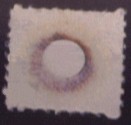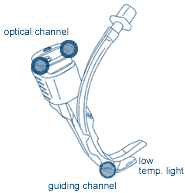Thursday August 24, 2006
Red urine during transfusion.
Q; You have been called to evaluate a patient who developed red-urine. At bedside, you noticed pRBC transufion in progress. What would be your first few immediate responses?
A; The first thing you need to determine is whether it is a transfusion reaction (hemolysis) or a pure hematuria. Send Urine or blood for centrifuge.
The onset of red urine during or shortly after a blood transfusion may represent hemoglobinuria from acute hemolytic reaction. To distinguish it from hematuria, if freshly collected urine is centrifuged, the urine sample remains clear red. If its pure hematuria, red blood cells settle at the bottom of the tube, leaving a clear yellow urine supernatant. Similarly patient's blood with centrifuge will turn free serum as a pink color from free hemoglobin in a clotted centrifuged specimen otherwise serum will be yellow if no transfusion reaction.
Other steps to take.
1. Halt the transfusion.
2. Send donor blood and patient's blood quickly to blood bank to make sure that right blood was transfused (repeat crossmatch and type) and for antibody screen, and direct and indirect Coombs tests.
If transfusion reaction is highly suspected:
3. Administer IV Benadryl, IV steroid, IV saline followed with IV lasix or with low dose dopamine to improve renal blood flow. Symptomatic treatment with acetaminophen.
4. Airway protection and if seems to be anaphylactic reaction, administer epinephrine (nebulizer treatment, SQ or IV drip depending on severity). Oxygen to keep saturation up.
5. Send complete lab workup including lytes, renal function (BUN/Cr), serum bilirubin level (peaks in 3-6 hours), Haptoglobin (binds to hemoglobin) , urine for hemoglobinuria, a repeat CBC (fails to show the rise in hematocrit because of intravascular or extravascular hemolysis) and DIC panel.
6. Hematology consult.
Management is largely supportive.
Related previous pearl: TRALI
 Thursday August 31, 2006
Thursday August 31, 2006

